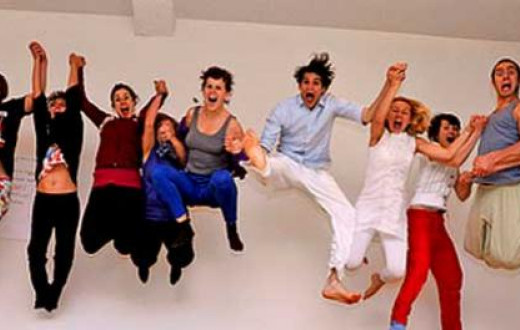Continued from Adoption of Yoga way of life should be a Corporate policy - 1
'Yoga and Life at Workplace'
Swami Shivananda Saraswati said: 'Yoga is a process of education leading to inner discipline, inner clarity and inner strength. With strength comes all the qualities that are appropriate and right. With clarity comes wisdom to apply those qualities, the right one at right time. With confidence, one is able to bypass arrogance, the negative expression of ego and can elevate. Equanimity is yoga, serenity is yoga, skill in action is yoga, control of all senses and mind is yoga. Yoga is all embracing, all inclusive and leads to all-round development of mind, body and soul.'
In Bhagavad Gita Lord Krishna told Arjuna that 'Skill in action is yoga (yogah karmasu kausalam). Put in your efforts but don't expect result out of that. Result is not in your hand (karmena vadhika raste, ma falesu kadachana)'. It says that yoga brings evenness in mind that abandons the effects of both good and bad actions. It suggests that yoga can be applied in day-to-day living, which seems largely utilitarian.
On the question of spirituality in the workplace, it has been proved that spiritual workers have a balanced objective view of the world, they listen as much as they speak, have broad mind, believe in the presence of higher force and purpose behind existence of mankind. They find time to think things through objectively, encourage and motivate others selflessly; consistently display loyalty, honesty, integrity and trust. Thus spiritual workers are also happier than their non-spiritual counterpart.
Alexander Kjerulf, the Chief Happiness Officer and founder of Happy at Work Project says: Anyone can be happy at work, and they should be because happy companies have
- Higher Productivity – happy people achieve better quality.
- Higher Quality – because happy employees care about quality.
- Lower Absenteeism – people actually want to go to work.
- Less Stress and burnout – happy people are less prone to stress.
- The best People – people want to work for happy companies.
- Higher Sales – happy people are the best sales people.
- Higher Customer Satisfaction – happy employees are the best basis for good service.
- More Creativity and Innovation – happy people are more creative.
- More Adaptability – happy people are much more adaptive and open to change.
- Better Stock performance and higher Profits – for all of the above reasons.
Simply put, yoga brings happiness in a person and happy people transform an ordinary company into a happy company. Happy companies are more efficient and make more money. And they make people happy.
A research by University of Texas in 1992 on effect of Transcendental Meditation, founded by Maharishi Mahesh Yogi, showed that meditators display greater physiological equilibrium than non-meditators. They also showed that meditators maintain this equilibrium under stress more effectively than non-meditators. It has also been seen by other researchers on TM techniques that meditators show increased job satisfaction, a decreased desire to change job, better performance and better relationships with higher authorities as well as co-workers in an organization. It has also been found by research that practicing yoga, meditation and pranayama makes mind still thus enabling workers and managers to purify their mind and make it spiritual, expand their self to include others around them, and help them grow and transform without expecting anything in return.
Conclusion
With increased stressful working environments and hectic schedule, many people struggle with the negative impact of their busy work lives. To manage their personal and work lives in balance, many people are turning to yoga which gives them peace of mind so that they can achieve a perfect work-life balance. Research shows that yoga can indeed reduce blood pressure and stress, improve work performance and make slow down aging. An article on 'Get your Work Life balance back with Yoga' by Kim Archer says that through mind-body approaches of yoga which is not only cost-effective but very easy to practice, has made 70% of Americans who have trouble sleeping or even have medically defined insomnia have become regular sleepers. The number of those suffering from pain and making regular doctor visits because of it has gone down by 36%. In India with growing incidents of loss of manpower and output due to stress related diseases of its workforce, different corporate bodies in India have adopted different ways to train their workforce with the help of organizations providing solutions to stress related disorders.
Currently yoga methods are taught in India and several western countries in general platform mainly to de-stress individuals and enhance personal satisfaction. However, it would be more beneficial if systematic exposure to yoga way of life to all managerial cadres of an organization is followed. In most organizations, leaders play a pivotal role in driving performance. Several leadership training programs are conducted by many successful companies. But the yoga way of life is seldom taught systematically as part of these leadership training programs. With exposure to yoga way of life, managers can become more self-aware and self-regulated personalities, with a proper perspective of life and various relationships. Practice of yoga removes the 'Rajas' (the guna which makes one restless, impatient and active) and the 'Tamas' (the guna which makes one lethargic and lazy) to a great extent and increases the 'Sattva' (the guna which makes body and mind light, joyful and happy). Without enhancing Sattva (one of the three gunas that exist in everything in this world) in us, increasing long lasting happiness in life is impossible.
In order to make yoga way of life a corporate policy, first of all the top management of the company have to be convinced about the utility of the idea. They should be aware of the yoga philosophy and keep faith on its results. Many top management, without having full knowledge of yoga philosophy and its science are skeptic about 'Vairagya' being taught as one of the two ways (regular practice is the other way) of getting full benefit of yoga on an individual. 'Vairagya' means not renunciation of everything in society but moderation in one's need for survival which will ultimately keep a person not excessively worried about work or its result. The top management should believe that one can deliver more when one is stress free and positive about life. Secondly the company has to find out the right person to train its workforce and the training of yoga way of life must be a continuous process with periodical regularity. The key to success lies in giving employees total knowledge of yoga – both theory and practice in a systematic manner. Lastly in the words of Gurudev Sri Sri Ravi Shankar, the founder of 'Art of Living' in India:
"Like a flower bud, human life has the potential to blossom fully. Blossoming of human potential to fullness is Yoga."
This article was written by Arun Kumar Ghosh who works with a leading public sector bank in Aurangabad, India.





























